- Home>
- Interactive Practice>
- 6th Grade ELA
Interactive ELA Practice for Grade 6
Pronouns
Adjectives
Interjections
Verb Tenses
Subject and Predicate
Subject-Verb Agreement
Shift in Verb Tenses
Question Tags
Complements
Phrasal Verbs
Verbals
Direct and Indirect Speech
Double Negatives
Punctuation
Commonly Confused Words
Collocations
Connotations and Denotations
Analogies
Proverbs and Adages
Personification
Editing and Proofreading










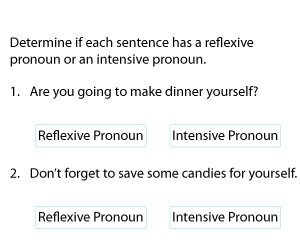 Recognizing Reflexive and Intensive Pronouns
Recognizing Reflexive and Intensive Pronouns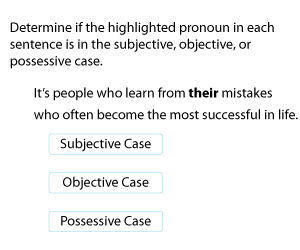 Identifying Subjective, Objective, and Possessive Pronouns
Identifying Subjective, Objective, and Possessive Pronouns Recognizing Direct and Indirect Object Pronouns
Recognizing Direct and Indirect Object Pronouns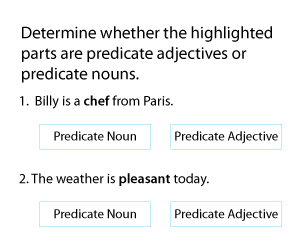 Predicate Adjectives vs. Predicate Nouns
Predicate Adjectives vs. Predicate Nouns Prepositional Phrases Functioning as Adjectives and Adverbs
Prepositional Phrases Functioning as Adjectives and Adverbs Recognizing Coordinating, Subordinating, and Correlative Conjunctions
Recognizing Coordinating, Subordinating, and Correlative Conjunctions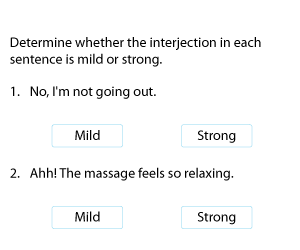 Identifying Mild and Strong Interjections
Identifying Mild and Strong Interjections Forming the Future Perfect Tense
Forming the Future Perfect Tense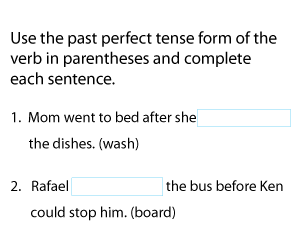 Forming the Past Perfect Tense
Forming the Past Perfect Tense Forming the Present Perfect Tense
Forming the Present Perfect Tense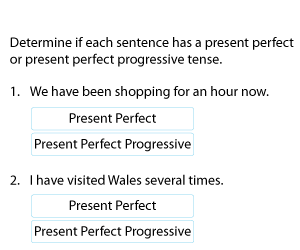 Present Perfect vs. Present Perfect Progressive
Present Perfect vs. Present Perfect Progressive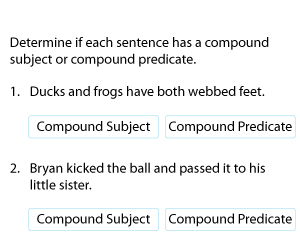 Identifying Compound Subjects and Compound Predicates
Identifying Compound Subjects and Compound Predicates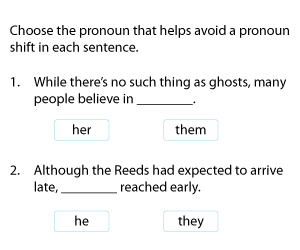 Choosing the Proper Pronoun for the Antecedent
Choosing the Proper Pronoun for the Antecedent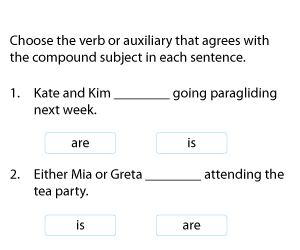 Compound Subjects and Verb Agreement
Compound Subjects and Verb Agreement Subject-Verb Agreement | Negative Sentences
Subject-Verb Agreement | Negative Sentences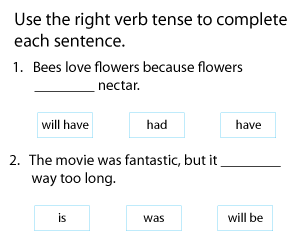 Completing with Correct Verb Tenses
Completing with Correct Verb Tenses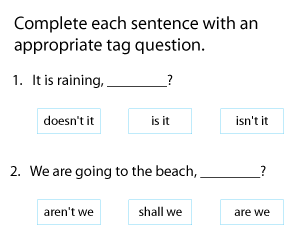 Completing Sentences with Tag Questions
Completing Sentences with Tag Questions Recognizing Subject and Object Complements
Recognizing Subject and Object Complements Identifying Dependent and Independent Clauses
Identifying Dependent and Independent Clauses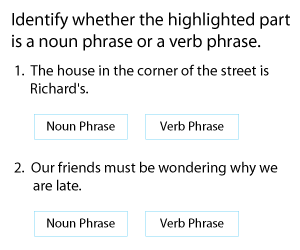 Identifying Noun Phrases and Verb Phrases
Identifying Noun Phrases and Verb Phrases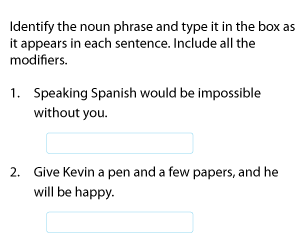 Recognizing Noun Phrases
Recognizing Noun Phrases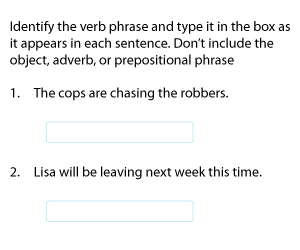 Recognizing Verb Phrases
Recognizing Verb Phrases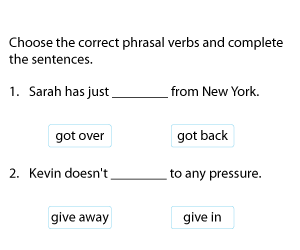 Choosing Phrasal Verbs
Choosing Phrasal Verbs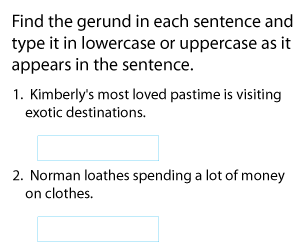 Identifying Gerunds
Identifying Gerunds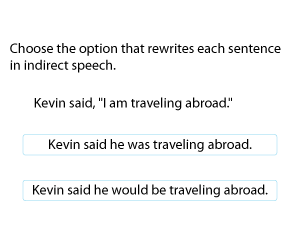 Changing Direct Speech into Reported Speech
Changing Direct Speech into Reported Speech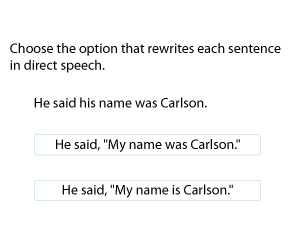 Converting Reported Speech into Direct Speech
Converting Reported Speech into Direct Speech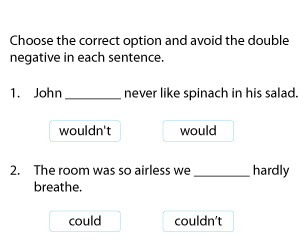 Avoiding Double Negatives in Sentences
Avoiding Double Negatives in Sentences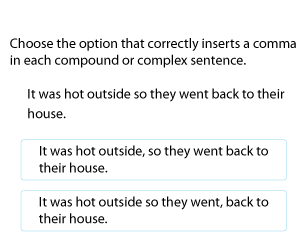 Using Commas in Compound and Complex Sentences
Using Commas in Compound and Complex Sentences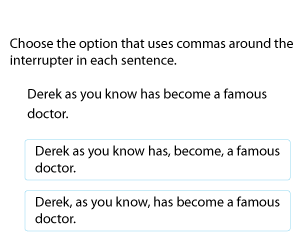 Using Commas with Interrupters
Using Commas with Interrupters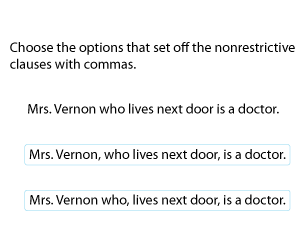 Using Commas with Nonrestrictive Clauses
Using Commas with Nonrestrictive Clauses Choosing Between "Sit" and "Set"
Choosing Between "Sit" and "Set"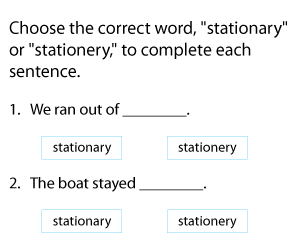 Choosing Between "Stationary" and "Stationery"
Choosing Between "Stationary" and "Stationery"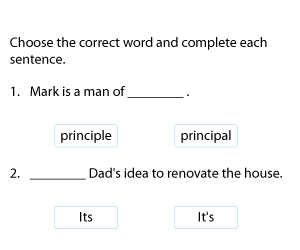 Frequently Confused Words
Frequently Confused Words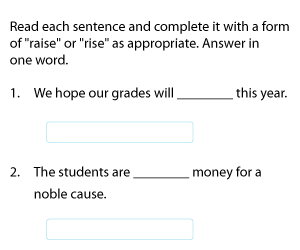 Choosing Between "Raise" and "Rise"
Choosing Between "Raise" and "Rise"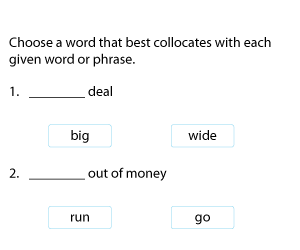 Collocations | Words that Go Together
Collocations | Words that Go Together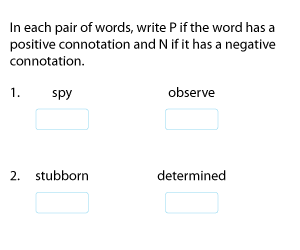 Recognizing Positive and Negative Connotations
Recognizing Positive and Negative Connotations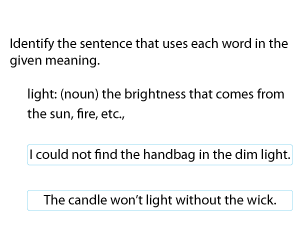 Which Sentence Accurately Represents the Meaning?
Which Sentence Accurately Represents the Meaning?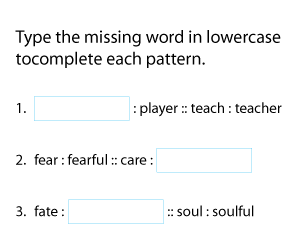 Analogies Using Word Patterns
Analogies Using Word Patterns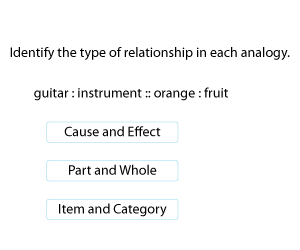 Recognizing the Types of Analogies
Recognizing the Types of Analogies Analogies | Opposites and Similar Words
Analogies | Opposites and Similar Words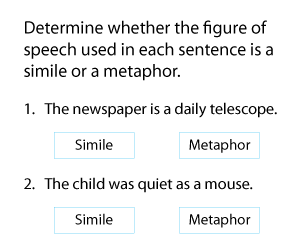 Recognizing Similes and Metaphors
Recognizing Similes and Metaphors Completing Proverbs and Adages
Completing Proverbs and Adages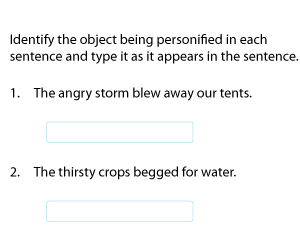 Recognizing the Personified Objects
Recognizing the Personified Objects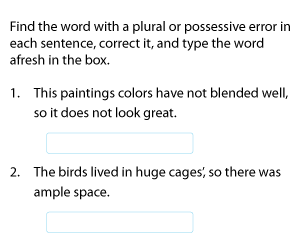 Correcting Mistakes in Plural and Possessive Forms
Correcting Mistakes in Plural and Possessive Forms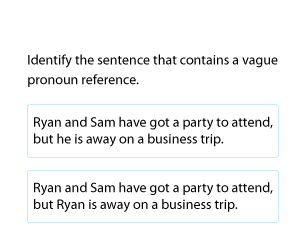 Faulty Pronoun Reference
Faulty Pronoun Reference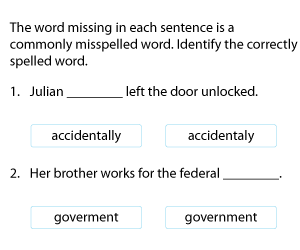 Choose the Correct Spelling
Choose the Correct Spelling